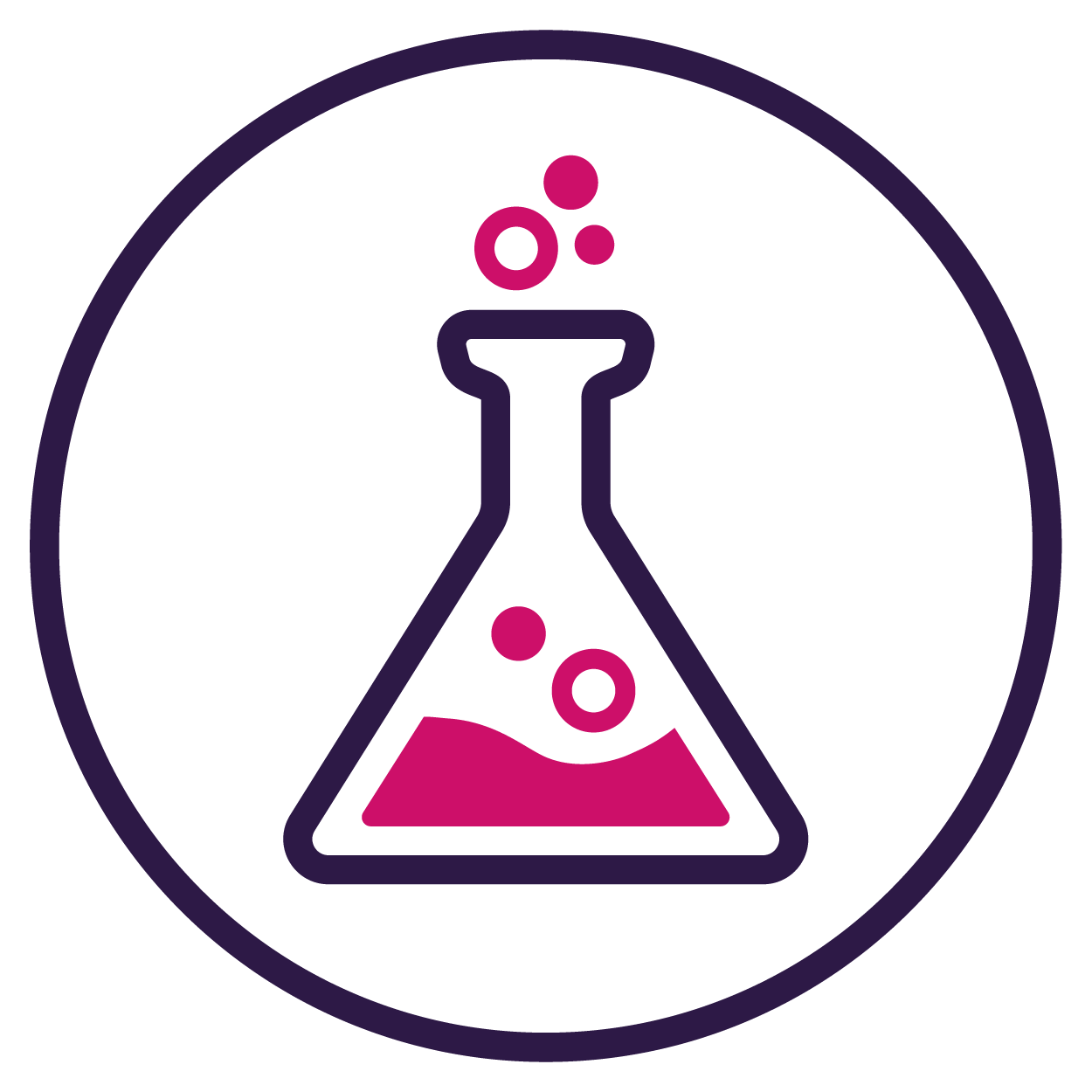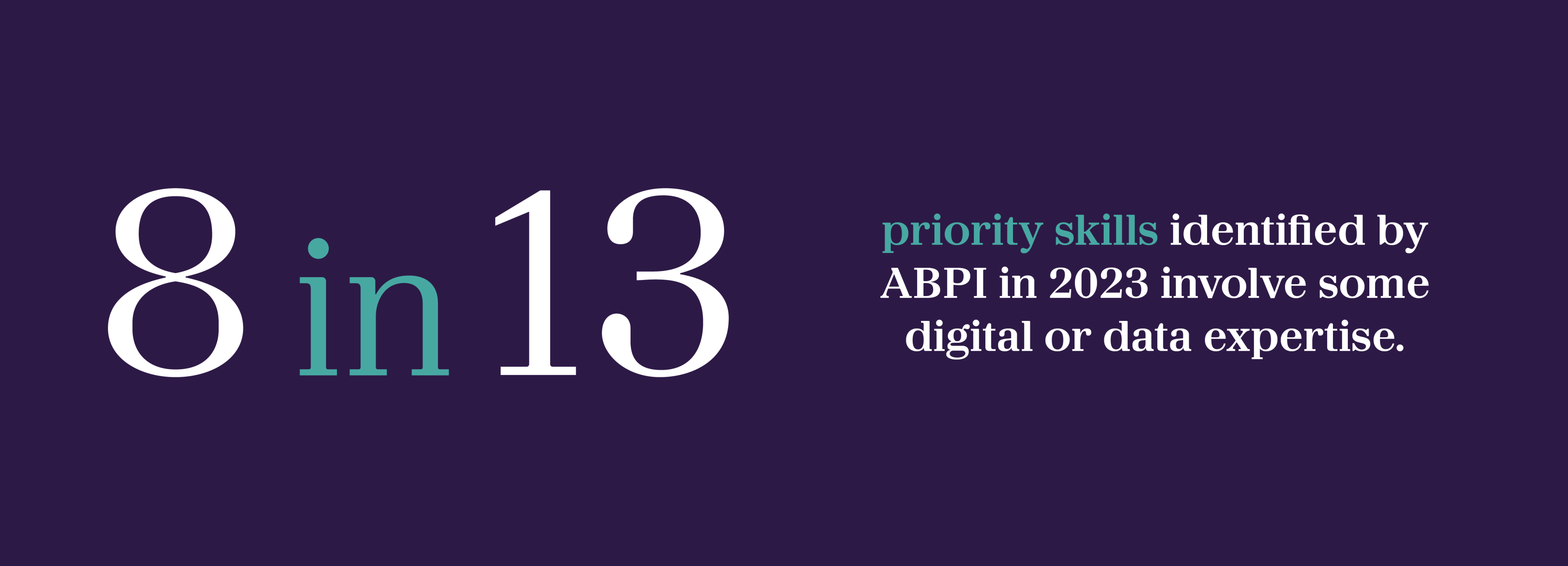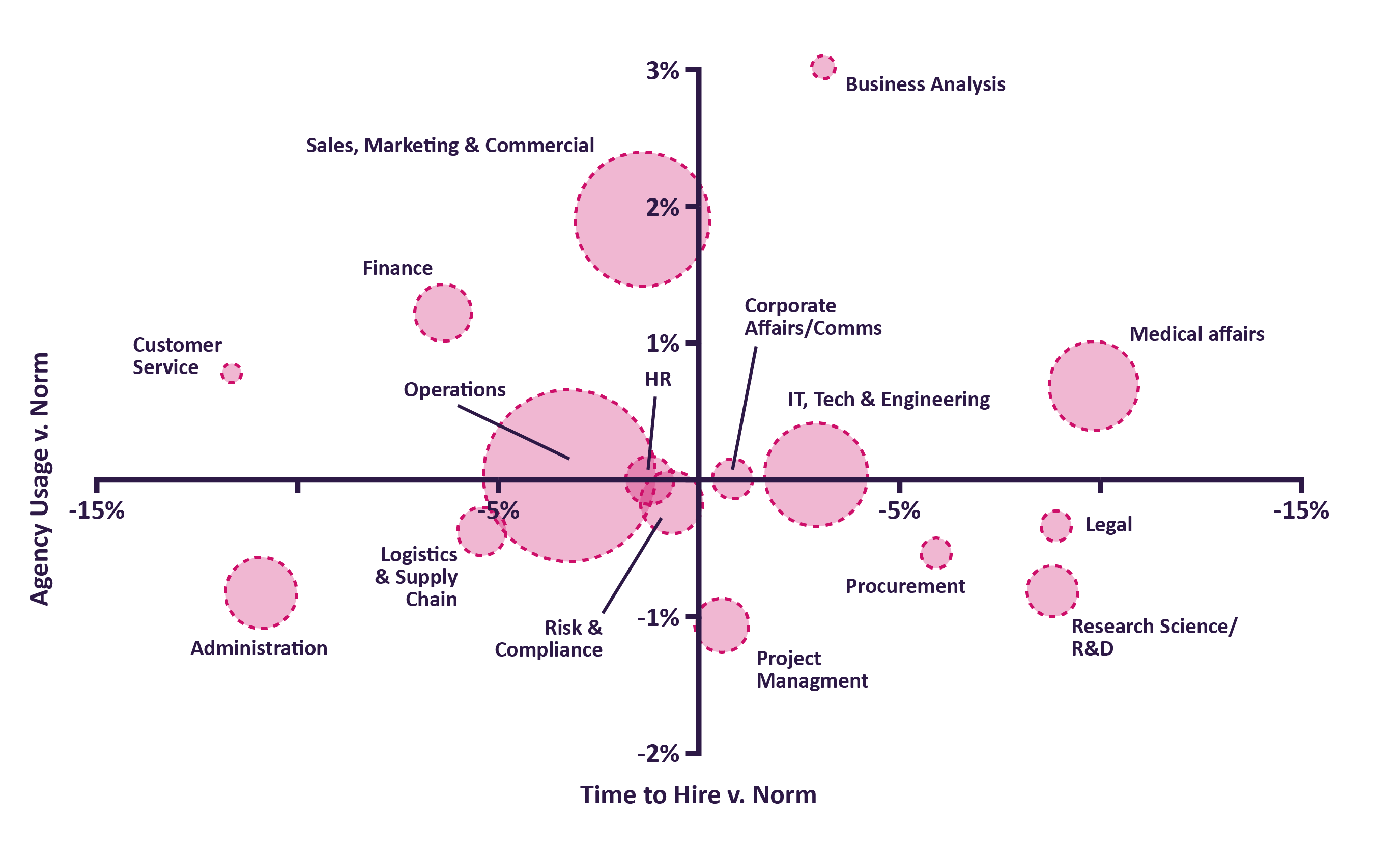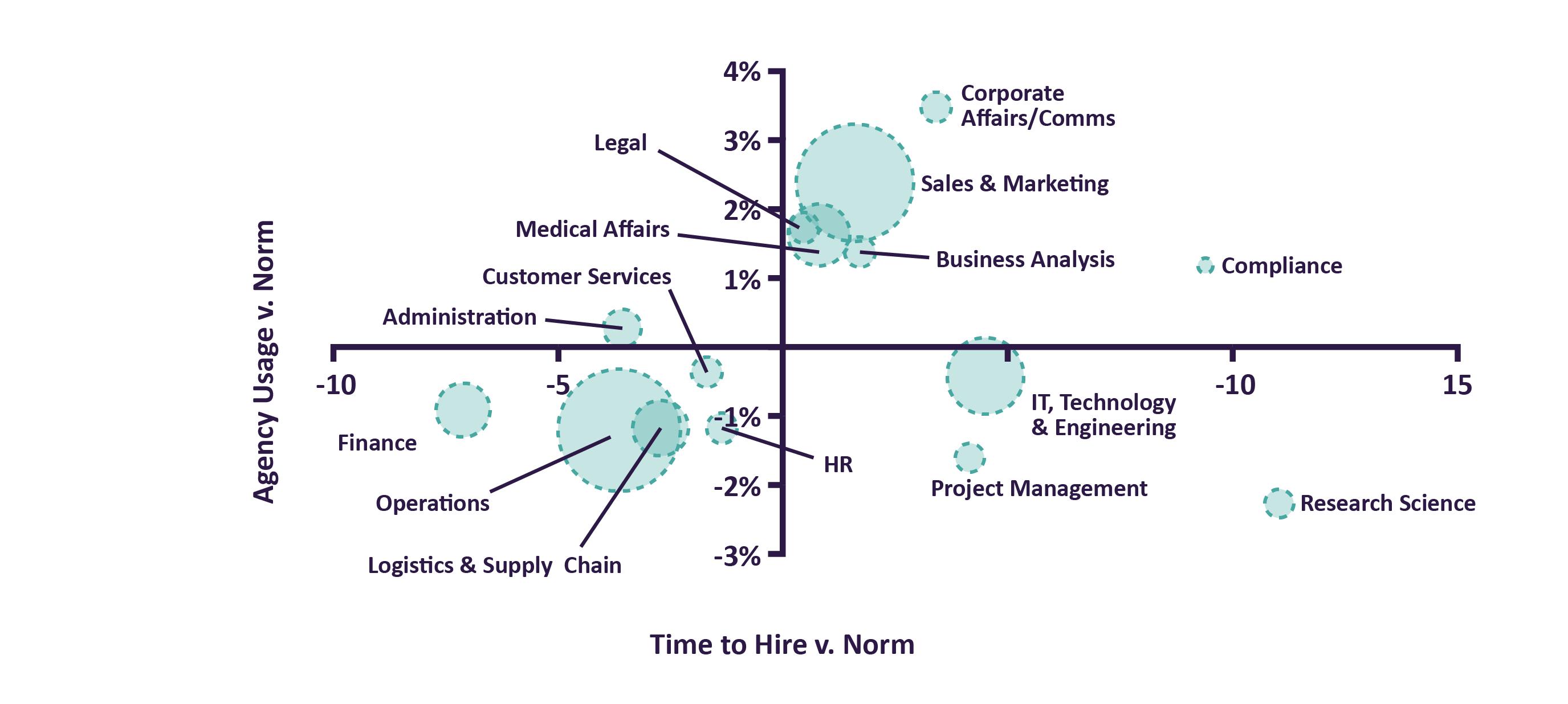
Solving the Pharma and Life Sciences talent deficit
How thinking differently could create a pipeline of possibility for this crucial sector

We have, and will continue to have, a talent shortage in Pharma and Life Sciences – 35% shy of what the sector needs according to our research. Talent leaders need to think differently about how they approach talent, and take some very specific actions to close the gap.

Two years ago
Although the pandemic created some profound talent challenges for most sectors and geographies, the Pharma and Life Sciences sector was largely sheltered from these. It was one of the few sectors that saw a bump in demand because of the vital services it provided.
However, the sector didn’t escape unscathed from the Great Resignation that followed. Pent up demand played a part. As did a backlog of attrition that caught up with itself post-COVID, resulting in an uptick in resignations. The result was a significant increase in demand for talent and a particularly tough hiring landscape.
Today's picture
Fast-forward to today, and the Pharma and Life Sciences sector is in a similar position to other industries. Growth has slowed because of a struggling economy, and attrition has reduced as people choose to stay where they are.
Yet we know from our data that external hiring remains challenging:
• At last count there were 87,000 sector roles unfilled in the US alone (LinkedIn).
• Time-to-hire is on the up. According to our research it rose by a full day in 2023 to an average of 43 days across all sectors and 44 in Pharma and Life Sciences.
• Internal hiring is down. Today, only 25% of roles are filled internally across all sectors, which is a dramatic drop from before the pandemic. While internal hiring in Pharma and Life Sciences was holding steady for the first half of 2023 at 29%, it still means that companies are more reliant on external hiring than they’ve ever been.
It's getting worse
Unfortunately, in all major economies, we know that talent shortages are going to get worse year on year for the Pharma and Life Sciences sector. This is principally because there are fewer people entering the workplace than the sector needs, and the talent available can’t keep pace with GDP growth.
The recent US Bureau of Labor Statistics workforce outlook shows the United States workforce will only grow at 0.3% per year over the next decade, while GDP is expected to grow at 1.9%.
Alongside this, in the West people are living longer, which is driving up demand for pharmaceuticals. The number of people aged 65 years or older worldwide is projected to more than double by 2050, rising from 761 million in 2021 to 1.6 billion. The number of people aged 80 years or older is growing even faster. At the same time, in emerging markets, a rise in the middle classes is set to have an impact. As prosperity increases, so will the issues that create further demand for drugs.
The skills Pharma and Life Sciences sector needs are also changing at record pace. Digital transformation is happening quickly because it’s accelerating the way treatments are developed, improving the probabilities of research and development (R&D) success and reducing R&D spend. And technology is fundamentally changing the core skills that companies need in a variety of critical R&D, clinical trial, manufacturing and quality-assurance (QA) roles. Eight of the top 13 priority skills identified by the UK Association of the British Pharmaceutical Industry (ABPI) in their 2023 survey involve an element of digital or data expertise. As a result 80% of pharmaceutical manufacturing facilities are struggling with skills mismatches and half of all executives say that recruiting experienced staff is challenging. Things aren’t much better in the clinical trial sphere, with more than a third (36%) of drug developers warning that talent shortages are limiting progress.


Understanding the scale of the deficit
A year ago, when we analyzed data from the US Pharma and Life Sciences market, we predicted that there’d be a 35% talent deficit by 2030. We recently updated this model, and this figure remains the same. It’s clear that, despite economic uncertainty and a slowdown in attrition, finding and attracting the right talent is still a profound challenge for talent leaders.
In 2021, we published a paper looking at talent scarcity across the Life Sciences sector by function (see figure B). We re-ran this research in 2023 (see figure A). We analyzed data from hires made in our major outsourcing clients in the industry in the last 18 months, and measured talent scarcity by plotting average time to hire and the extent to which agencies were used. Our findings show that the landscape hasn't changed a great deal 2021. We still see talent shortages in the same functions.
Looking at the two data records, we can see some positive movements in corporate affairs where agency usage has decreased. Also in sales, marketing and commercial where time-to-hire has come down. This has mainly been as a result of businesses prioritizing internal hiring for this key segment of the workforce which has led to savings of up to eight days in time to hire. However, at the same time, we are also seeing growth in agency usage for business analysis and a big increase in time-to-hire for medical affairs.
Figure A: Scarce talent by function - 2023 Data

Figure B: Scarce talent by function - 2021 Data


Towards a solution
With not much change in the last two years and a bleak outlook ahead, how might the Pharma and Life Sciences talent market improve? The answer lies in thinking differently to curate a productive talent pipeline.
To fulfil future requirements, organizations are going to have to make some radical moves. This includes redesigning work and exploiting generative AI to get tasks done, which should help reduce the need for new external talent. But competition is still going to increase exponentially.
Companies are going to need to take some very specific actions from a talent perspective to try and close the gap. Here are our four priorities for talent leaders.
1. Reimagine your approach to internal mobility
The first place to look when filling your talent gap is inside your organization. Yet most organizations aren’t making it easy for employees to find new internal roles.
A 2019 study by Deloitte found that just 6% of companies felt they were proficient at internal talent mobility, while more than half of employees thought it was easier to find a job outside their existing organization than inside. But those organizations that do succeed see a payback in employee retention. LinkedIn data shows that employees stay at companies almost 2x longer if the employer is highly committed to internal hiring.
To reimagine your approach to internal hiring, here are some of the key things to consider.
• Get to know the skills you have. Then identify the ones you need. Apply advanced analytics, AI, machine learning and market-based skills data from your talent partners to see deep into the skills position of your enterprise. Publicize the skills you need to your workforce and give them ways to develop these.
• Embrace potential over experience. Identify adjacent skills that complement or align with target jobs. Create career pathways that encourage sideways movement in the company. And equip recruiters with the data and insights they need to know when to focus on the existing workforce.
• Foster a culture of mobility. Think beyond traditional jobs to work and skills. Incorporate more ‘gig’ and project work. Introduce job rotation, non-linear career paths and continuous learning into workflows. Coach and incentivize hiring managers to support talent mobility. Build and regularly tap into contingent workforce pools via direct sourcing to extend your talent ecosystem even further.
• Create an inspiring internal candidate experience. Make sure your internal recruiting practices set you apart from the competition and bolsters internal hiring. Make use of a talent marketplace to record workforce skills and make matching easier for recruiters, employees and hiring managers.


2. Adopt a skills-based approach to external hiring
It’s still normal in the Pharma and Life Sciences industry to recruit from the competition and to use past experience, qualifications, universities or personal networks as the principal way of assessing talent. This narrows talent pools and lessens diversity. And it also handicaps TA efforts when there are such extensive skills gaps as today.
Skills-based hiring widens your talent pools and increases diversity. It’s also a better indicator of future success. Studies show that skills-based hiring is five times more predictive of future performance than hiring for education, and 2.5 times more predictive than past work experience.
Start small to gain confidence. Once you have proved it works, you can move onto the rest of the business.
Here’s how to adopt a skills-based approach to external hiring.
• Define critical and hard-to-get skills. Interrogate your business to identify the critical skills it needs as well as those that are the hardest to attract, hire and retain. Deploy a shared language and framework for thinking about skills.
• Encourage a culture shift in hiring. Focus on new hires or existing employees with adjacent abilities that can be developed through training. Offer strategic advice to business leaders and hiring managers, using your knowledge of the market to influence recruiters and collaborate around the skills needed to fill each role.
• Leverage market insights and AI tools. Harness data insights to understand what skills are available and what hidden talents and markets you can map across when you’re not looking for a like-for-like replacement. Exploit AI-driven technology for efficiencies in advertising roles, skills-matching, candidate identification and shortlisting. (To ensure ROI, think clearly about the problem you are solving, engage all relevant stakeholders and understand how any technology you deploy will integrate with current platforms.)
• Consider creating a dedicated skills team. Make this team responsible for running sourcing and attraction campaigns based on skills rather than roles, and building talent pools of critical skills outside of specific open requisitions. For TA teams in the Pharma and Life Sciences sector to address the skill shortage they need to be efficient and agile (not just to scale up and down their recruitment in terms of volumes but also to shift their focus from one part of the business to another) while at the same time being at the cutting edge of recruitment.
3. Take a holistic, thoughtful approach to talent
Understanding and embracing the skills-based economy also means thinking differently about talent. Work becomes about getting a project done rather than completing a standard working week. And the talent you draw on can be permanent, contingent or project gig workers.
Once you’ve identified what skills your organization needs and learned more about the skills and capabilities you are trying to attract, consider how and where you might hire them. For example, can you get the people you need permanently? Where do they need to be located? Do you need to bring in just a few individuals with the skills you need to upskill other employees?
Workforces can and should be blended strategically to create the most talented workforce for supporting your organization. To reverse the talent deficit, they’ll need to be boundless, global and able to scale and flex at pace. The goal is to build a diverse-enough skills pool to be able to ask, ‘who or what is the best fit for this specific initiative, no matter the source?’
4. Make insight the bedrock of everything you do
Using insight, or ‘talent intelligence’, to drive the hiring strategy is already a game-changer. It can give organizations the ability to inspect skills availability internally and externally, and to discover adjacent skills as well as upskilling opportunities.
It provides external market information such as competitor talent, their specific skill sets, salary expectations and where to find the greatest supply of the required talent.
With access to advanced market insight, you can leverage your knowledge of the market to advise managers on how to best adjust hiring requirements – enabling success and reducing time to hire.


No choice but to think differently
It’s clear that progressing along ‘business as usual’ lines is not going to cut it when it comes to solving the talent deficit in Pharma and Life Science in the coming years. To quote Josh Bersin, Global HR Research Analyst and CEO of The Josh Bersin Company:
“Organizations that want to succeed in this post-industrial era, where talent is scarce and hiring times are extended, have no choice but to think laterally about approaches to hiring and career pathways.”
Thinking about the skills you need now and in the future is critical.
To find out how AMS can help your organization create a pipeline of possibility to solve the talent deficit, get in touch today.
